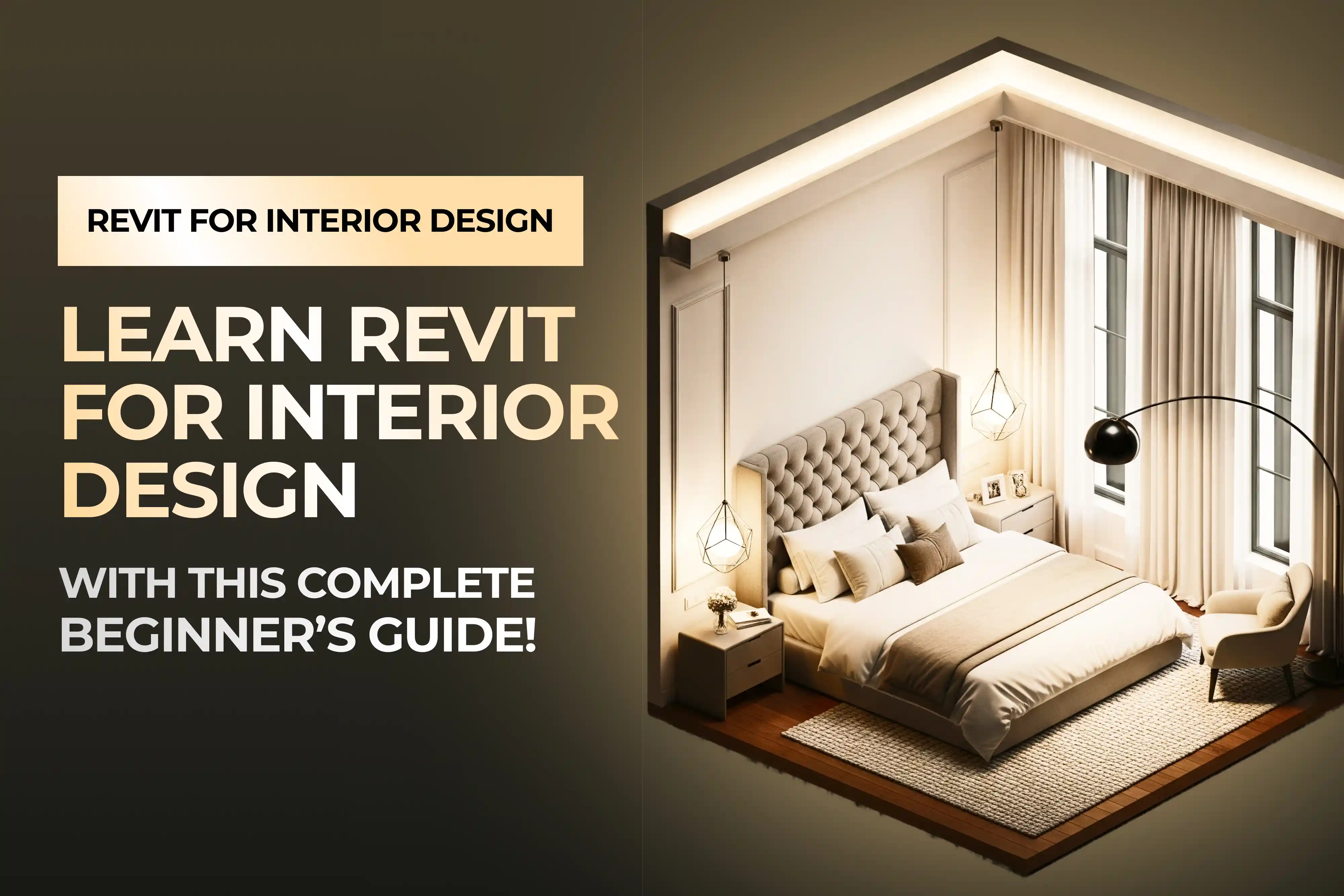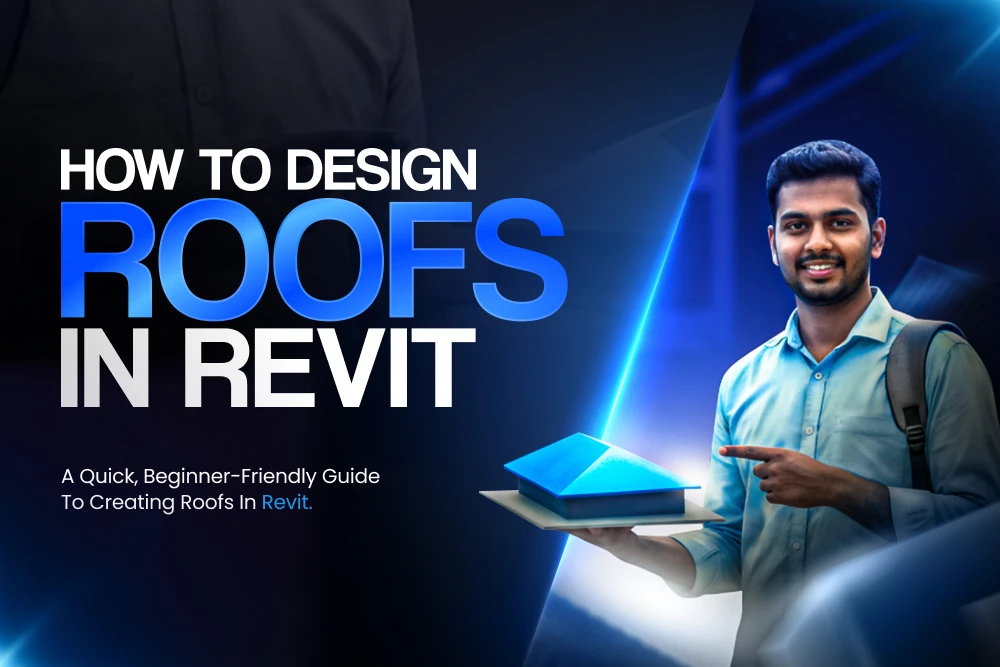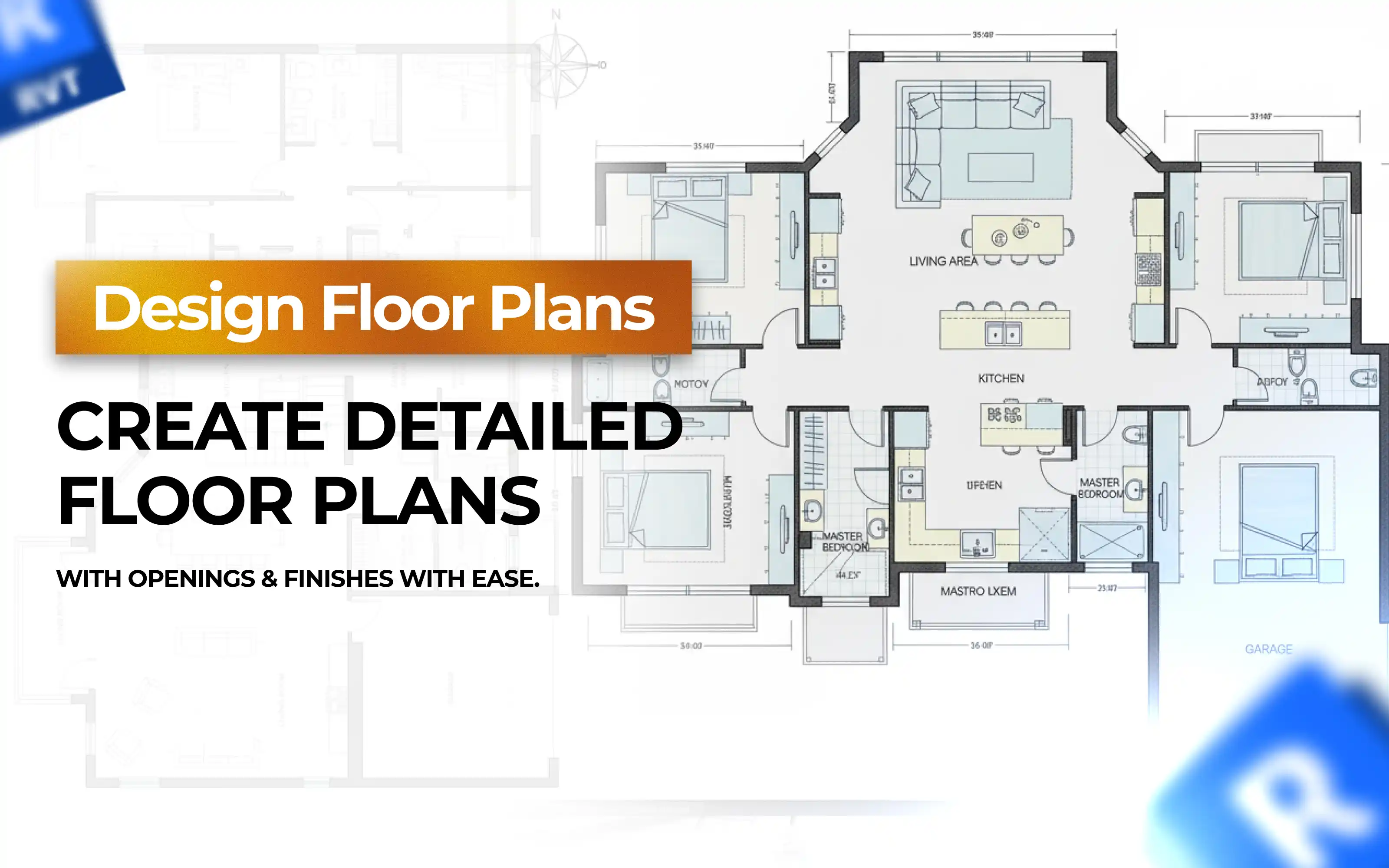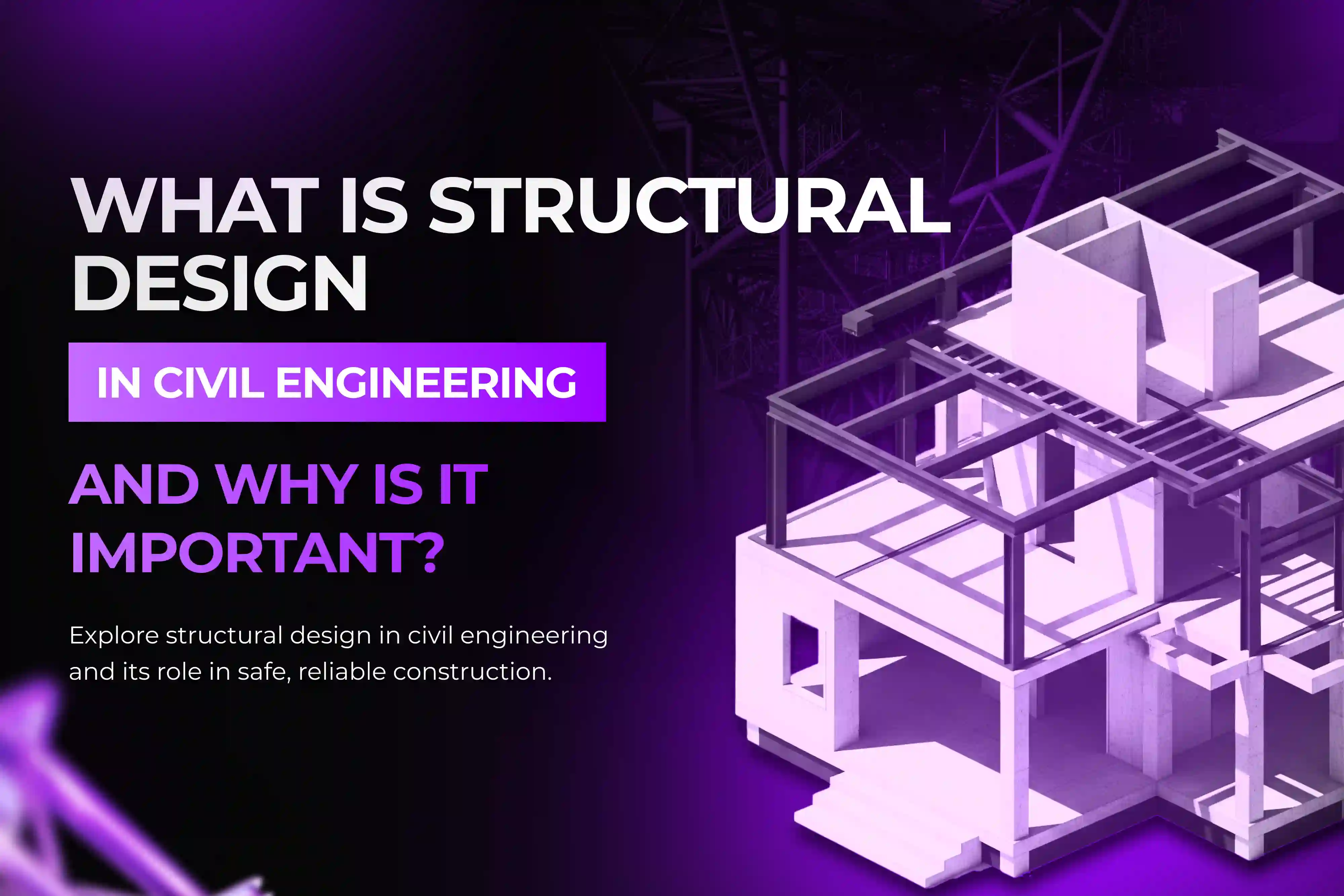
Revit for Interior Design: A Complete Guide for Beginners
Introduction
Interior design has moved far beyond mood boards and 2D sketches. Today, clients expect realistic 3D models, accurate layouts, and even walkthroughs before construction begins. This is where Revit for interior design comes in. With its Building Information Modeling (BIM) capabilities, Revit helps interior designers create detailed 2D drawings, 3D models, and project documentation—all in one place.
If you are an aspiring designer, architect, or student looking to learn Revit, this guide will show you how Revit supports interior design and why it has become one of the most in-demand skills in 2025.
Why Use Revit for Interior Design?
Unlike traditional CAD software, Revit allows you to work in a BIM environment. This means every wall, door, window, or furniture piece you place has real-world properties, dimensions, and material data. For interior designers, this ensures accuracy, coordination, and realistic visualizations.
Here are some key reasons interior designers prefer Revit:
Accurate 2D & 3D drawings in one model
Material libraries for realistic textures (tiles, wood, marble, paint)
Furniture placement for space planning
Clash detection with structural or MEP elements
Renderings & walkthroughs for client presentations
If you’re planning to upgrade your skills, check out our Revit Training Program designed for beginners and professionals.
Key Features of Revit for Interior Designers
1. Space Planning and Layouts
Revit helps interior designers create precise floor plans and layouts. You can place walls, partitions, furniture, and fixtures to test multiple design options. Unlike static CAD drawings, you can update layouts dynamically, and changes reflect across all drawings.
2. Furniture and Fixture Libraries
Revit comes with preloaded furniture families like sofas, chairs, tables, wardrobes, and kitchen equipment. Designers can also download or create custom furniture models. This helps in creating realistic interiors quickly.
3. Material and Texture Application
One of the highlights of Revit is its material library. Interior designers can apply different flooring types, wall paints, wallpapers, tiles, wood finishes, and lighting effects. This makes it easier to present multiple design styles to clients.
4. Lighting Design and Visualization
Interior ambiance depends heavily on lighting. With Revit, you can simulate daylight and artificial lighting. Designers can place ceiling lights, wall lamps, or chandeliers and test how they impact the space during different times of the day.
5. Walkthroughs and Rendering
Clients often struggle to understand flat 2D drawings. Revit allows you to create 3D walkthroughs and high-quality renders. This makes presentations more engaging and helps clients visualize the final outcome before execution.
For a deeper dive into advanced visualization, explore our Revit and BIM Training Program, where you’ll also learn BIM workflows.
Applications of Revit in Interior Design
Residential Interiors
Revit helps design living rooms, kitchens, bedrooms, and bathrooms with accurate furniture layouts, lighting, and finishes. Designers can test color palettes and create multiple design versions.
Commercial Interiors
From office layouts to retail shops, Revit simplifies space planning by providing accurate seating arrangements, circulation paths, and lighting design.
Hospitality Design
Hotels and restaurants require detailed coordination between interior layouts, HVAC, lighting, and furniture. Revit makes this coordination seamless while also offering realistic visualizations.
Renovation and Remodeling
Revit’s phasing tools allow designers to plan renovations, showing both existing and proposed conditions. This helps in remodeling projects where clients need clear before-and-after visuals.
Benefits of Learning Revit for Interior Designers
Better Career Opportunities – Companies and clients increasingly demand Revit skills.
Time-Saving – Automates schedules, quantities, and updates across drawings.
Improved Client Communication – Realistic renders and walkthroughs boost client confidence.
Error-Free Designs – Clash detection avoids costly mistakes during construction.
Versatility – Useful for residential, commercial, and large-scale interior projects.
Step-by-Step Workflow of Revit for Interior Design
Start with Floor Plans – Define the layout of walls, doors, and windows.
Add Furniture and Fixtures – Place furniture families and fixtures based on space planning.
Apply Materials and Finishes – Assign flooring, wall colors, tiles, or wood textures.
Lighting Placement – Add ceiling lights, lamps, or natural daylight simulations.
Create 3D Views and Renders – Switch to 3D mode, adjust camera angles, and generate renders.
Generate Documentation – Automatically create floor plans, sections, and schedules from the same model.
Future of Revit in Interior Design (2025 & Beyond)
With the rise of BIM integration in construction and design, Revit is no longer optional—it’s essential. Interior designers who master Revit can not only design efficiently but also collaborate with architects, engineers, and contractors.
By 2025, skills like Revit modeling, BIM coordination, and real-time visualization will be must-haves for professionals entering the design industry.
Conclusion
Revit is transforming the way interior design is practiced. From precise layouts to realistic visualizations, it helps designers deliver projects that are accurate, coordinated, and client-friendly. Whether you’re a beginner or an experienced designer, learning Revit will give you a strong edge in today’s competitive market.
At S2B School of Engineering, we offer specialized Revit Training Courses and Revit and BIM Training Programs to help you master every aspect of Revit for interior design.
Start your journey today and take your interior design career to the next level.
Frequently Asked Questions:
1. Is Revit good for interior designers?
Yes, Revit is an excellent tool for interior designers. It allows you to create accurate floor plans, 3D models, lighting, and material finishes while integrating everything into one BIM workflow. This makes design more precise and easier to present to clients.
2. How do I create an interior design in Revit?
To create an interior design in Revit, start by setting up your floor plan, then place walls, furniture, and finishes from the Revit library. You can also adjust lighting, materials, and textures to build realistic 3D visualizations for your project.
3. Why should interior designers use Revit in 2025?
In 2025, Revit continues to be a top choice for interior designers because of its BIM features, real-time collaboration, and realistic rendering tools. It helps designers save time, reduce errors, and deliver high-quality visualizations for both residential and commercial projects.
4. Can Revit replace SketchUp for interior design?
Revit and SketchUp serve different purposes. While SketchUp is great for quick 3D models, Revit provides BIM-based workflows with detailed documentation, schedules, and coordination. Many interior designers use both, depending on project needs.
5. Do interior designers need Revit training?
Yes, Revit training is highly recommended for interior designers. It helps you learn advanced tools for modeling, materials, and rendering while improving accuracy and workflow efficiency. With proper training, you can design interiors that are both creative and technically sound.
















